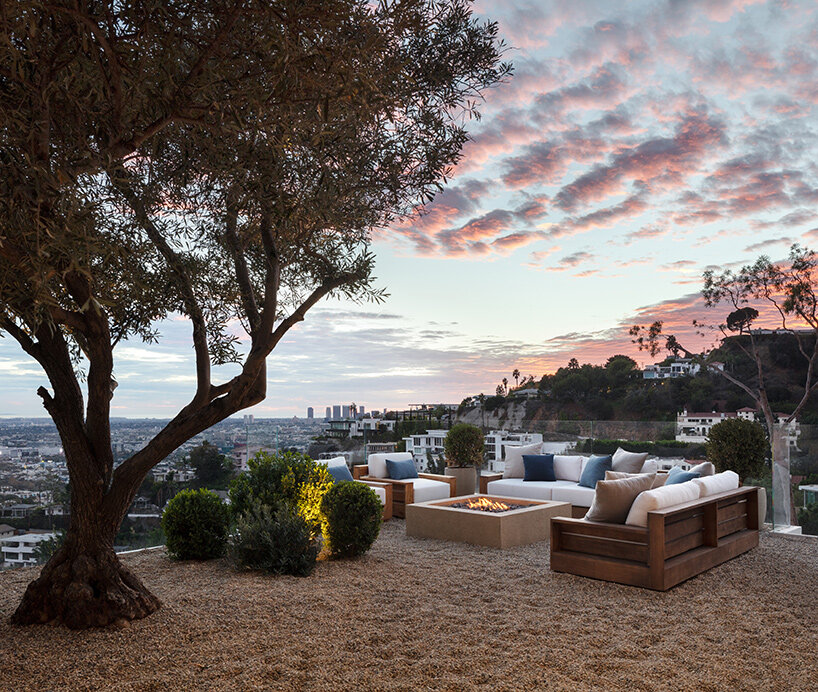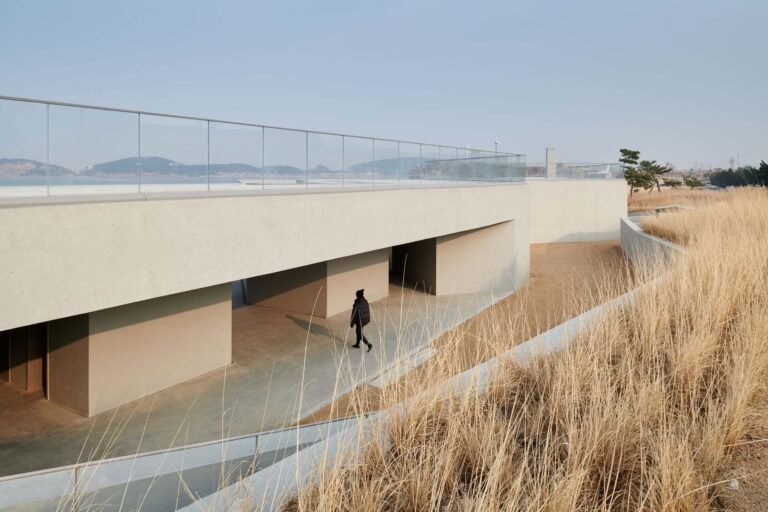SAOTA’s ‘bellgave’ house draws from iconic mid-century architecture of LA
celebrating the history of the hollywood hills
South African architecture studio SAOTA takes to Los Angeles‘ Hollywood Hills to build its newly completed Bellgave house. Perched atop the edge of a steep slope over Laurel Canyon Boulevard, the site offers unobstructed panoramic views from downtown Los Angeles to Santa Monica. Designing the contemporary house, the team shows influence from Pierre Koenig’s iconic mid-century Stahl House — widely known as Case Study House No. 22 — which can be seen nearby to the west.
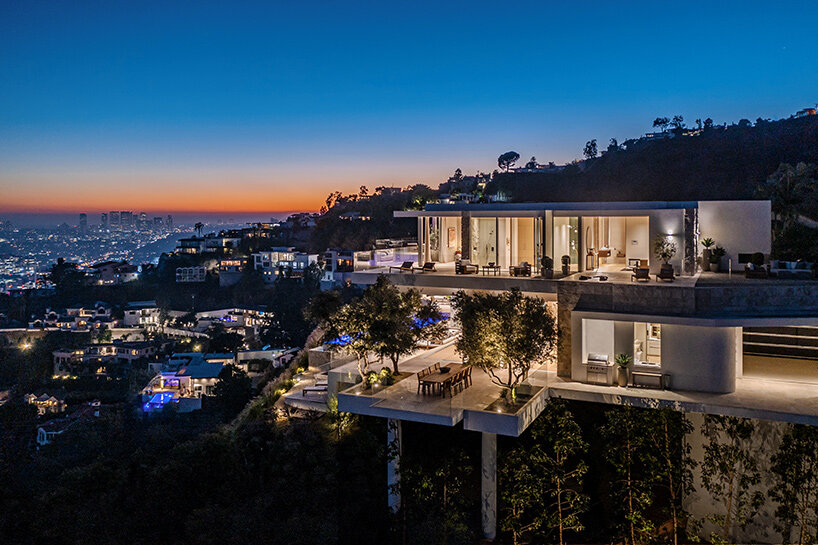 images © Mike Kelley | @mpkelley_
images © Mike Kelley | @mpkelley_
bellgave house: a composition of horizontal planes
With the design of Bellgave, the architects at SAOTA engaged with the modernist precedent set by the Stahl House and other Los Angeles Case Study Houses, reprising and advancing some of their pioneering innovations that forged the distinctive indoor-outdoor lifestyle that became synonymous with the city itself, and a distinctive, climatically appropriate regional modernism.
By raising a platform on pillars and caissons, the architects lifted the house towards the view and established a series of intersecting and overlapping horizontal planes that project outwards from the cliff edge. The horizontal emphasis of the terraces and over-sailing eaves reflect the city’s wide horizons, with a sense of volume and compression that responds to its distinctive character. In a sense, the back of the house can be understood as a giant viewing platform.
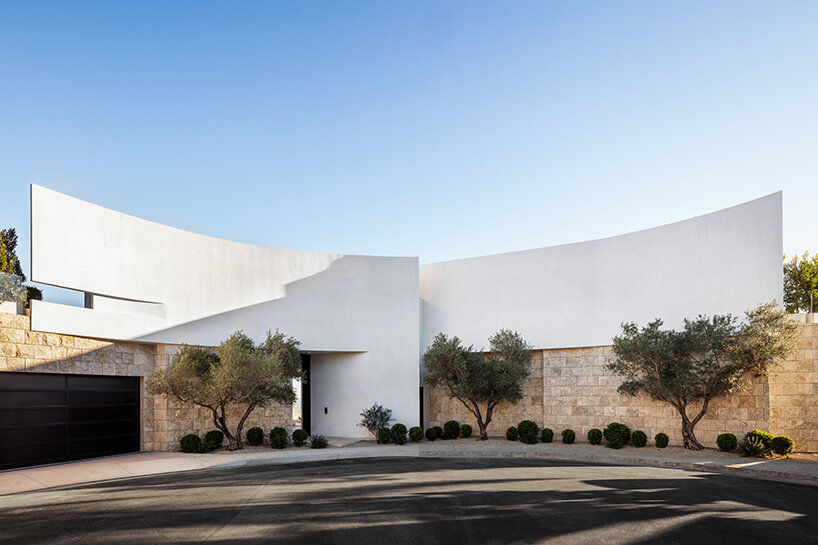
the cantilevered glass box
Recognizing the Stahl House, the main lounge of SAOTA’s Bellgave is situated within a cantilevered glass box at the front of the house that projects outwards to embrace the view. A rim-flow pool along the edge of the deck appears to extend beneath it, reinforcing the sense that the house is ‘floating’ while fusing the foreground with the distant views of the Pacific Ocean.
The straight-lined city grid below is picked up as an ‘ordering principle’ for the structure and program of the house. Its geometry is at once ‘in alignment’ with the urban activity below yet floating above the bustle.
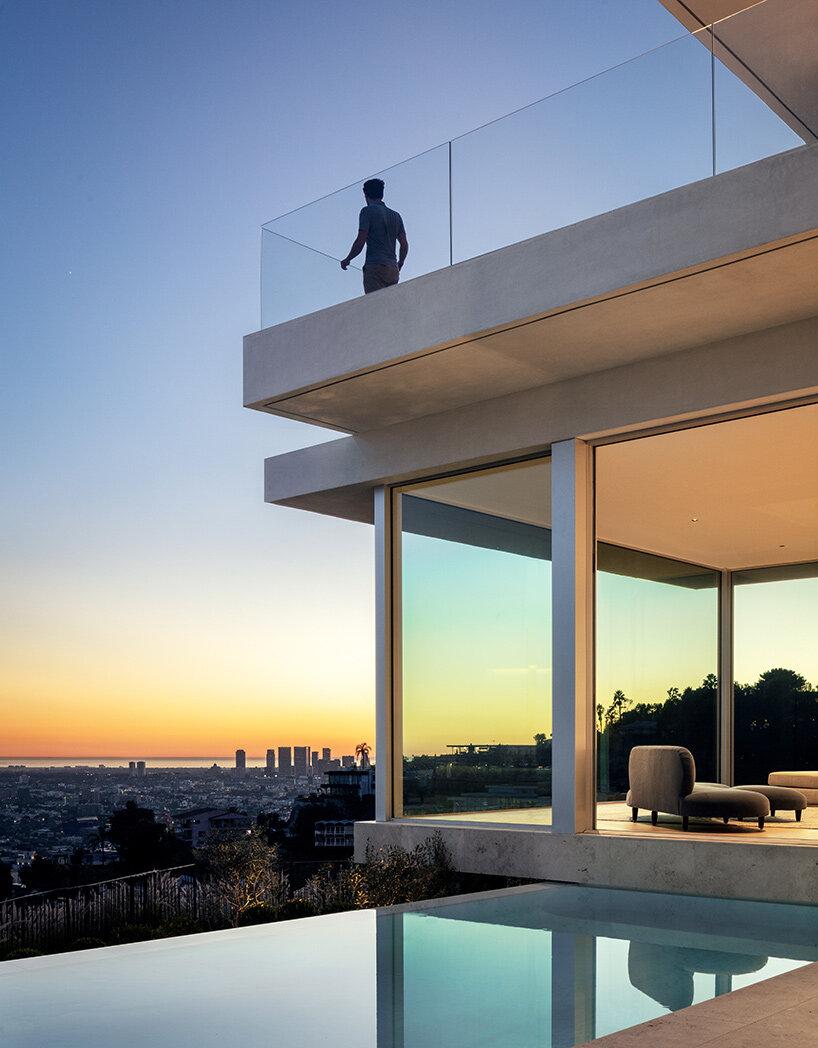
This spatial order also forms the basis of the interlinking arrangement of spaces throughout the house. Interior and exterior spaces are similarly fused. Elements of the landscaping, such as the sculptural olive trees, create focal points, anchoring the experience with indoor and outdoor ‘destinations,’ ranging from al-fresco dining areas and poolside lounging areas to the dining and lounge.
Interior and exterior volumes are modulated to create more intimate spaces to counterbalance the vast scale of the views. The bedrooms are on the upper level, creating similarly elevated experiences floating above the city.
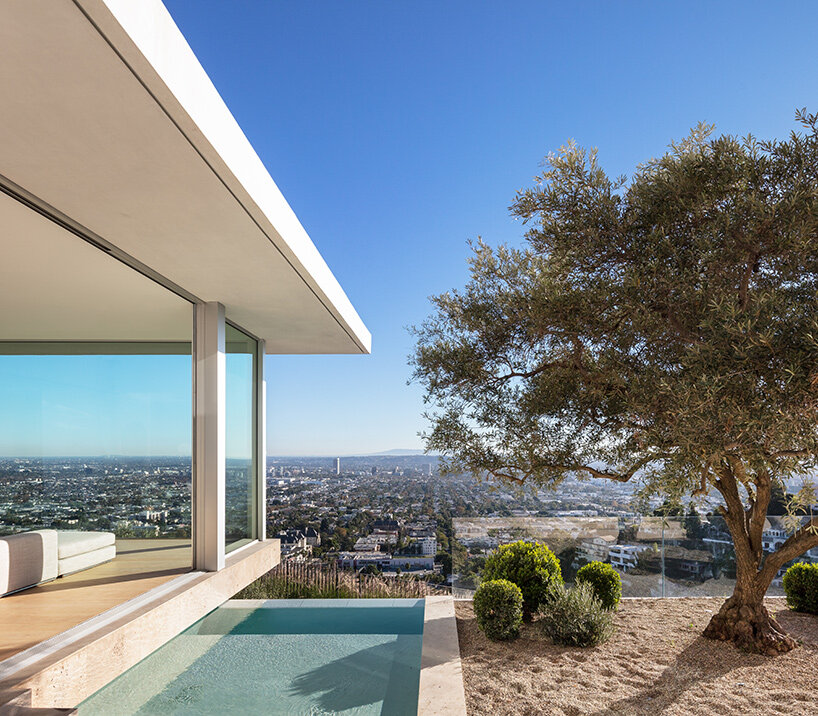
The entrance at the end of a cul-de-sac, by contrast, is designed with high, arcing walls that create a sense of enclosure and ‘held space’ while standing as a powerful sculptural marker at the end of the street. ‘Slices’ between the intersecting curves function as openings for the entrance, allowing light to filter through to the stairwell while maintaining privacy. The walls are deliberately unadorned to act as screens for the theatrical shadow patterns cast by the light through the trees in front of them.
These curving lines and the sense of embrace they create at the entrance give way to the rectilinear layout of the main living spaces as you progress into and through the house and towards the view in a sequence from grounded, enclosed experience to airy and elevated.
